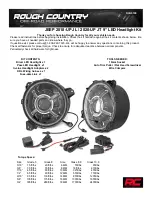
Things to remember when driving
84
General driving notes
Closing liftgate
Operate the vehicle only when the liftgate
is completely closed; otherwise, exhaust
fumes could enter the interior of the vehicle.
<
If special circumstances should make it abso-
lutely necessary to operate the vehicle with the
liftgate open:
1.
Close all windows and the panorama glass
sunroof.
2.
Greatly increase the air supply of the air
conditioning system or automatic climate
control, refer to page
.
Hot exhaust system
High temperatures occur in the exhaust
system of every vehicle. Do not remove
the heat shields installed adjacent to various
sections of the exhaust system, and never apply
undercoating to them. When driving, standing
at idle, and parking, take care to avoid possible
contact between the hot exhaust system and
any highly flammable materials such as hay,
leaves, grass, etc. Such contact could lead to
a fire, resulting in serious personal injury and
property damage. Do not touch hot exhaust
pipe, it can cause burns.
<
When vehicle is parked
Condensation forms in the air conditioner/auto-
matic climate control system during operation,
and then exits under the vehicle. Traces of con-
densed water under the vehicle are therefore
normal.
Before driving into a car wash
Fold in the exterior mirrors, refer to page
otherwise, they could be damaged due to the
width of the vehicle.
Deactivate the rain sensor; otherwise, damage
could result from undesired wiper activation,
refer to page
.
Hydroplaning
When driving on wet or slushy roads,
reduce road speed. If you do not, a wedge
of water can form between tires and road sur-
face. This phenomenon is referred to as hydro-
planing, and is characterized by a partial or
complete loss of contact between tires and
road surface, ultimately undermining your abil-
ity to steer and brake the vehicle.
<
The danger of hydroplaning increases as tire
tread depth decreases, also refer to Minimum
tread depth on page
Driving through water
Do not drive through water on the road if it
is deeper than 20 in/50 cm, and then only
at walking speed. Otherwise, the vehicle´s
engine, the electrical systems and the trans-
mission may be damaged.
<
Using handbrake on inclines
Do not hold the vehicle in place on slopes
by slipping or riding the clutch, use the
handbrake instead. Otherwise, greater clutch
wear will result.
<
Safe braking
Your BMW is equipped with ABS as standard
equipment. In situations in which it is required, it
is best to apply the brakes fully. Since the vehi-
cle maintains steering responsiveness, you can
nevertheless avoid possible obstacles with a
minimum of steering effort.
Pulsation at the brake pedal combined with
sounds from the hydraulic circuits indicates to
the driver that ABS is in its active mode.
Wet roads
On wet roads or in heavy rain, briefly apply light
pressure to the brake pedal every few miles.
Watch traffic conditions to ensure that this
maneuver does not endanger other road users.
The heat that is generated by the brake applica-
tions helps to dry the brake rotors and pads.
The full braking force will then be available
when you need it.
Online Edition for Part no. 01 41 2 602 348 - © 02/09 BMW AG
Summary of Contents for 2010 X3
Page 2: ...Online Edition for Part no 01 41 2 602 348 02 09 BMW AG ...
Page 10: ...Online Edition for Part no 01 41 2 602 348 02 09 BMW AG ...
Page 18: ...Online Edition for Part no 01 41 2 602 348 02 09 BMW AG ...
Page 82: ...Online Edition for Part no 01 41 2 602 348 02 09 BMW AG ...
Page 92: ...Online Edition for Part no 01 41 2 602 348 02 09 BMW AG ...
Page 126: ...Online Edition for Part no 01 41 2 602 348 02 09 BMW AG ...
Page 143: ...Online Edition for Part no 01 41 2 602 348 02 09 BMW AG ...
















































